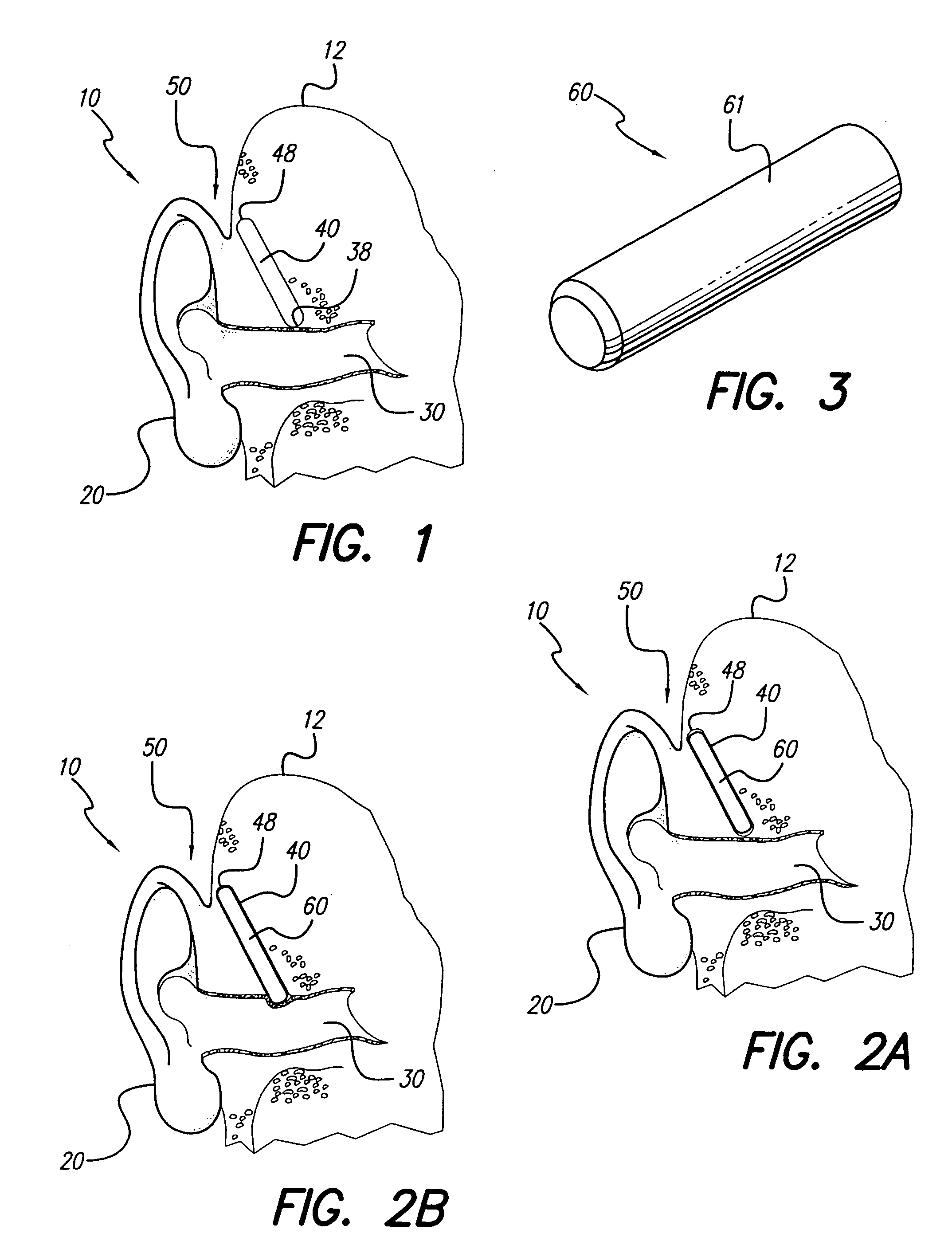Implanted outer ear canal hearing aid
a technology of hearing aids and ear canals, applied in the field of hearing aid systems, can solve the problems of occlusion of the ear canal, reverb and physical discomfort, and the inability of the transducer to produce audio feedback
- Summary
- Abstract
- Description
- Claims
- Application Information
AI Technical Summary
Benefits of technology
Problems solved by technology
Method used
Image
Examples
Embodiment Construction
[0033]Turning first to FIG. 1, there is shown a schematic representation of an ear 10 attached to the head 12 of a user of the present invention (or a patient who benefits from use of the present invention). FIG. 1 is a front view of the ear 10, i.e., as seen when looking at the front of the head (i.e., face) of the user. The ear 10 has a pinna 20 (a.k.a. auricle) and an ear canal 30. The space behind the pinna 20 is known as the retro-auricular space 50, which space is not readily seen or observed when others look at the user.
[0034]In accordance with the present invention, a small recess 40 is made through tissue under the skin of the retro-auricular space 50, extending toward the ear canal 30. Such recess-making is readily accomplished because of the soft tissue and / or relatively soft cartilage in this region; thus, the process is medically a relatively simple procedure. The recess 40 need not be very long, e.g., on the order of about 7—25 mm in length, and about 3—10 mm in diamet...
PUM
 Login to View More
Login to View More Abstract
Description
Claims
Application Information
 Login to View More
Login to View More - R&D Engineer
- R&D Manager
- IP Professional
- Industry Leading Data Capabilities
- Powerful AI technology
- Patent DNA Extraction
Browse by: Latest US Patents, China's latest patents, Technical Efficacy Thesaurus, Application Domain, Technology Topic, Popular Technical Reports.
© 2024 PatSnap. All rights reserved.Legal|Privacy policy|Modern Slavery Act Transparency Statement|Sitemap|About US| Contact US: help@patsnap.com










